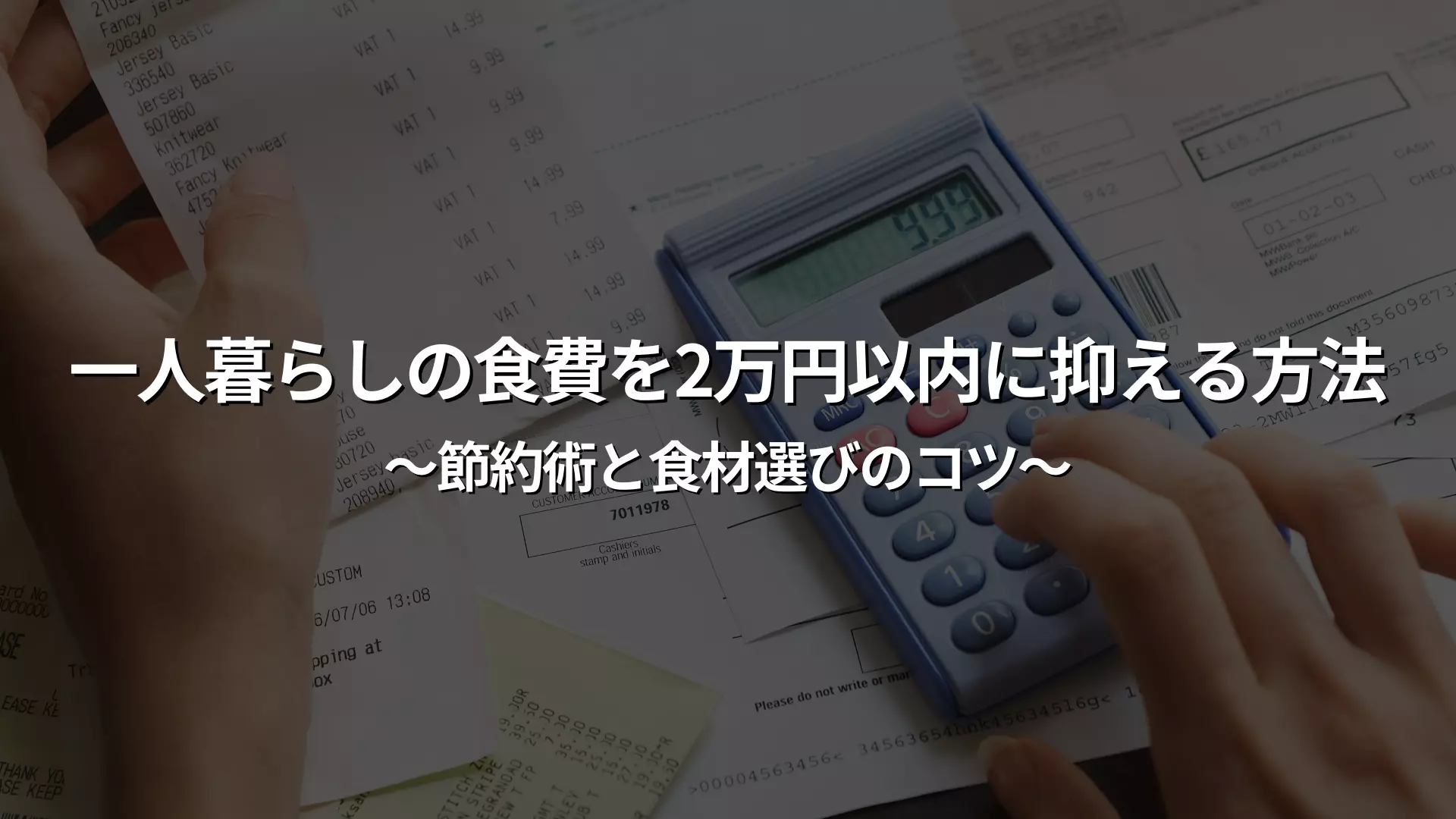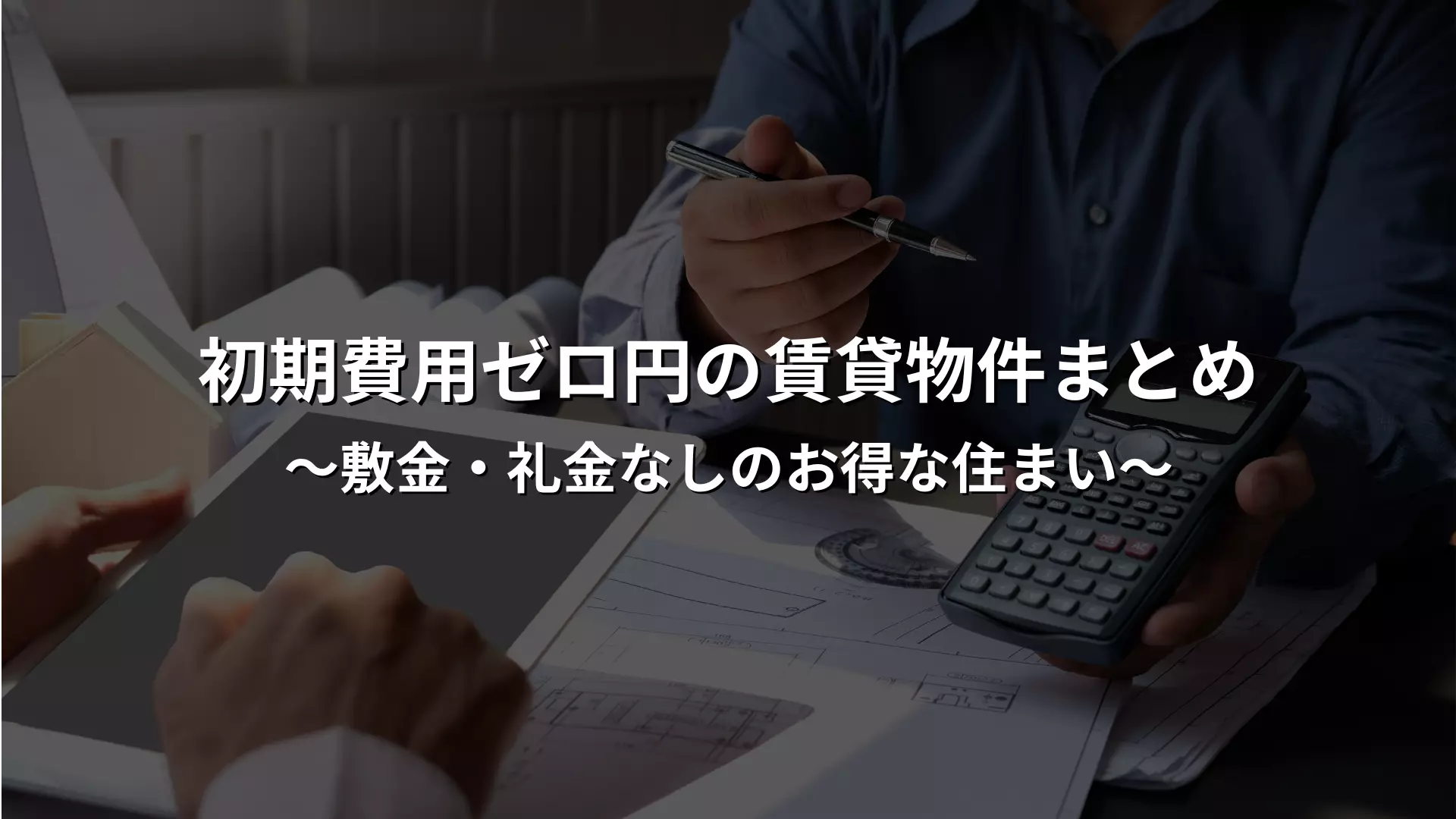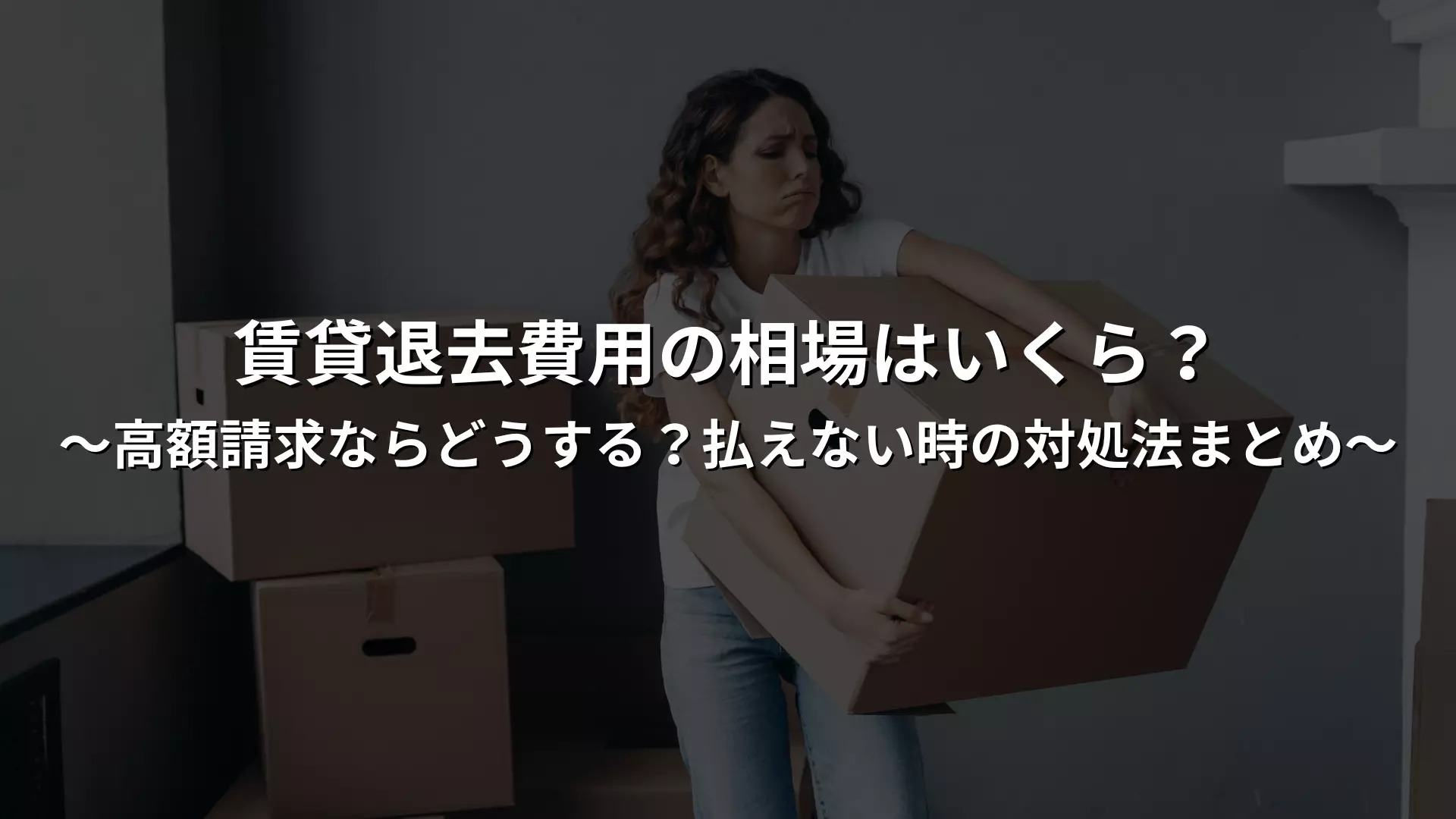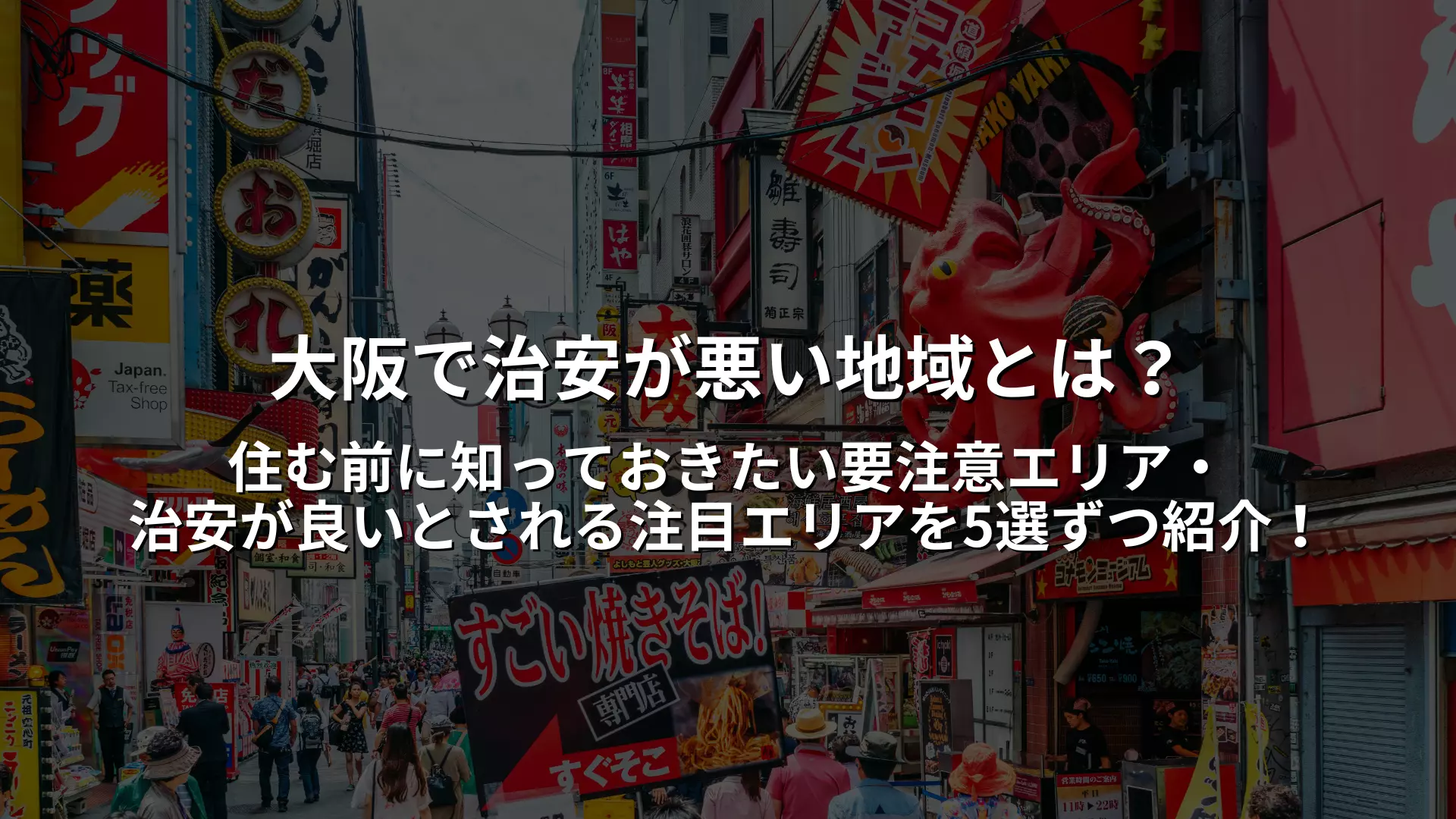Introduction | What is the average food cost for a single person?
When you live alone, food expenses are a particularly large burden on your household budget. We will explain in detail what the actual average is and whether the goal of "under 20,000 yen" is realistic. The first step to starting to save wisely is to know your current situation.
Average food expenses for a single person
When you start living alone, the first thing you worry about is food costs. It's an expense that accounts for a large proportion of your living expenses, along with rent and utility bills, but how much do you actually spend on it?
According to the Ministry of Internal Affairs and Communications' household survey, the average food cost for a single person is about 30,000 to 40,000 yen per month. This includes eating out, drinking parties, and snacks from convenience stores, and many people say that "in months when they eat out a lot, it gets even more expensive."
Especially for busy working adults and students, after work or classes, they tend to rely on convenience store bento boxes or eating out because they are too tired to cook. "Before I knew it, I had spent so much..." is a real situation that many people who live alone have experienced at least once.
Is "20,000 yen" realistic? We explain whether it's possible or not.
So, is it really possible to keep food expenses under 20,000 yen?
The bottom line is that it is entirely possible if you plan carefully and cook your meals at home. However, the reality is that it will be difficult if you live a lifestyle where you eat out or use convenience stores every day.
For example, if you eat out for every meal every day, it will cost you an average of 700 to 1000 yen per meal. If you do this three times a day, it will cost you 2000 to 3000 yen a day, and a whopping 60,000 to 90,000 yen a month. However, if you mainly cook at home, you can keep the cost down to around 200 yen per meal, so even if you eat three meals a day, it will come to about 600 yen, and about 18,000 yen a month.
Of course, there will be initial investments required for seasonings, rice, cooking utensils, etc., but once you buy these, you can use them for months, and you can reduce costs even further by buying in bulk and storing them in the freezer.
You can also combine this by cooking only breakfast and dinner at home and eating out for lunch. This will also allow you to significantly reduce your food expenses, so "20,000 yen or less" is a very realistic goal.
Benefits of reducing food costs and changes in lifestyle
Saving money on food has a lot more to offer than just saving money.
First, you can use the money you save for other things. For example, you can use it for your hobbies, save it up for future travel, or buy your favorite clothes or interior items. The fact that you can create a flexible budget just by reviewing your food expenses is a big attraction.
Furthermore, cooking for yourself allows you to know what you are eating and makes you more health conscious. If you cook for yourself, you can eat more vegetables, less oil, and have a balanced diet. This has also led to many people feeling better and seeing their skin condition improve.
Ultimately, saving on food costs is more than just money; it's the first step to a better, healthier, more fulfilling life.
Basic ideas for keeping food expenses under 20,000 yen
To keep food expenses under 20,000 yen, it is not enough to just save money blindly. Here, we will explain the basic ideas and mindset, how to create a budget, and the importance of cooking at home. By understanding this, you can start a lifestyle that you can continue without difficulty.
The key is to cook your own meals
The biggest key to keeping your food expenses under 20,000 yen is, without a doubt, to cook your own meals.
If you cook at home, you can keep the cost of a meal down to around 200 yen. For example, if you use cheap, nutritious ingredients such as chicken breast, bean sprouts, and eggs, you can keep the cost of a main dish and side dish down to a reasonable price.
Furthermore, if you make a large amount of food and freeze it, you can save the trouble of having to cook it every time. It is often thought that "cooking at home is troublesome," but in reality, if you use some ingenuity, you can significantly reduce both time and effort.
Compared to eating out, you can consume less salt and oil, which has great health benefits.
The key points of budget setting and how to use it
Even if you want to keep it as cheap as possible, if you don't have a specific budget, you'll end up wasting money. First, decide on a monthly food budget of 20,000 yen, which works out to about 670 yen per day. Using this amount as a base, you can get by with spending about 220 yen per meal.
For example, when shopping at the supermarket, if you set a target of "about 5,000 yen per week," you will naturally avoid unnecessary purchases. It is also recommended to decide on a menu for the week in advance and create a shopping list.
"Time" and "effort" to be aware of when living frugally
We often hear people say that cooking at home is time-consuming and tiring. However, if you keep the key points in mind, it can actually be surprisingly easy.
For example, you can prepare food in bulk on the weekend. If you pre-freeze meat, cut and store vegetables, and prepare stews and salads all at once, you only need to heat up or finish cooking on weekdays. This makes it easy to continue cooking at home even on days when you get home late from work or school.
In addition, one-pot dishes (meals that can be made in one pot) and rice bowls require less washing up and shorten cooking time.
In addition to saving on food costs, keeping housing costs down is also a major factor in reducing expenses when living alone. At Cross House, initial costs and monthly rent are kept low, reducing the overall burden of living and leaving you with more leeway for other expenses, such as food.
Search for a room
Only furnished properties with appliances are listed!
How to choose and purchase ingredients to keep your budget under 20,000 yen
In order to reduce food costs, it is important to know which ingredients to choose and how to buy them. Here we will explain in detail how to choose cheap and nutritious ingredients, shopping tips, and how to use freezer storage. It is full of tips for eating healthily while reducing waste.
What are cheap and nutritious foods?
For example, bean sprouts are very cheap, costing around 30 yen per bag, and can be used in a wide variety of dishes, including stir-fries, soups, namul, and hotpots. Tofu is reasonably priced at around 50 to 100 yen per block, and is rich in protein. There are endless ways to use it, such as in chilled tofu, mapo tofu, and as an ingredient in miso soup.
Chicken breast is rich in healthy protein. If you marinate it and freeze it, you can use it in a variety of ways, such as baking, steaming, and stir-frying.
By keeping these cheap, nutritious ingredients on hand, you can add variety to your cooking, saving money on food and managing your health at the same time.
Tips for buying and choosing vegetables
When choosing vegetables, it is best to choose those that are in season, as they are cheap, nutritious, and delicious. For example, tomatoes, cucumbers, and peppers are available at low prices in the summer, while Chinese cabbage, radishes, and spinach are available at low prices in the winter. "Cut vegetables" and "salad packs" are convenient, but be careful as they are expensive.
Another good idea is to take advantage of supermarket sale days or limited-time sales before closing time.
Another key point is to choose vegetables that can be frozen. Broccoli, spinach, mushrooms, etc. can be frozen raw or boiled briefly before freezing for long-term storage.
How to use frozen foods and frozen storage
When you hear the term "frozen foods," some people may think of them as expensive and low in nutrition, but they are actually a very smart money-saving item. For example, frozen vegetables cost around 200 yen per bag, and you can use only as much as you need, so there is no waste. Especially for people living alone, there are many cases where "even if you buy vegetables, you can't eat them all and they end up going bad," but with freezing, you don't have to worry about that.
Another effective way to store food you buy yourself is to freeze it. If you buy chicken breast in bulk, divide it into single-meal portions, season it, and freeze it, you can simply thaw and cook it when you're ready to cook.
Vegetables can also be prepared according to needs, such as slicing carrots into thin strips and freezing them, or boiling spinach and freezing it in small portions.
How to buy in bulk and make a shopping list
Do you ever find yourself buying more than you need every time you go to the supermarket? Buying in bulk and using a shopping list are the keys to avoiding this.
Decide on a menu for a few days and list only the ingredients you will need. By writing down the details, you can avoid unnecessary purchases and stay within your budget.
Buying in bulk also gives you the advantage of taking advantage of sales and large packs. Any leftovers can be frozen to avoid waste.
How to choose between eating out and packing lunches? Tips for those living alone
Many people probably think, "It's difficult to completely stop eating out..." Here, we will introduce ways to save money without completely eliminating eating out, techniques for preparing bento lunches in advance, and ideas for making effective use of food when living alone.
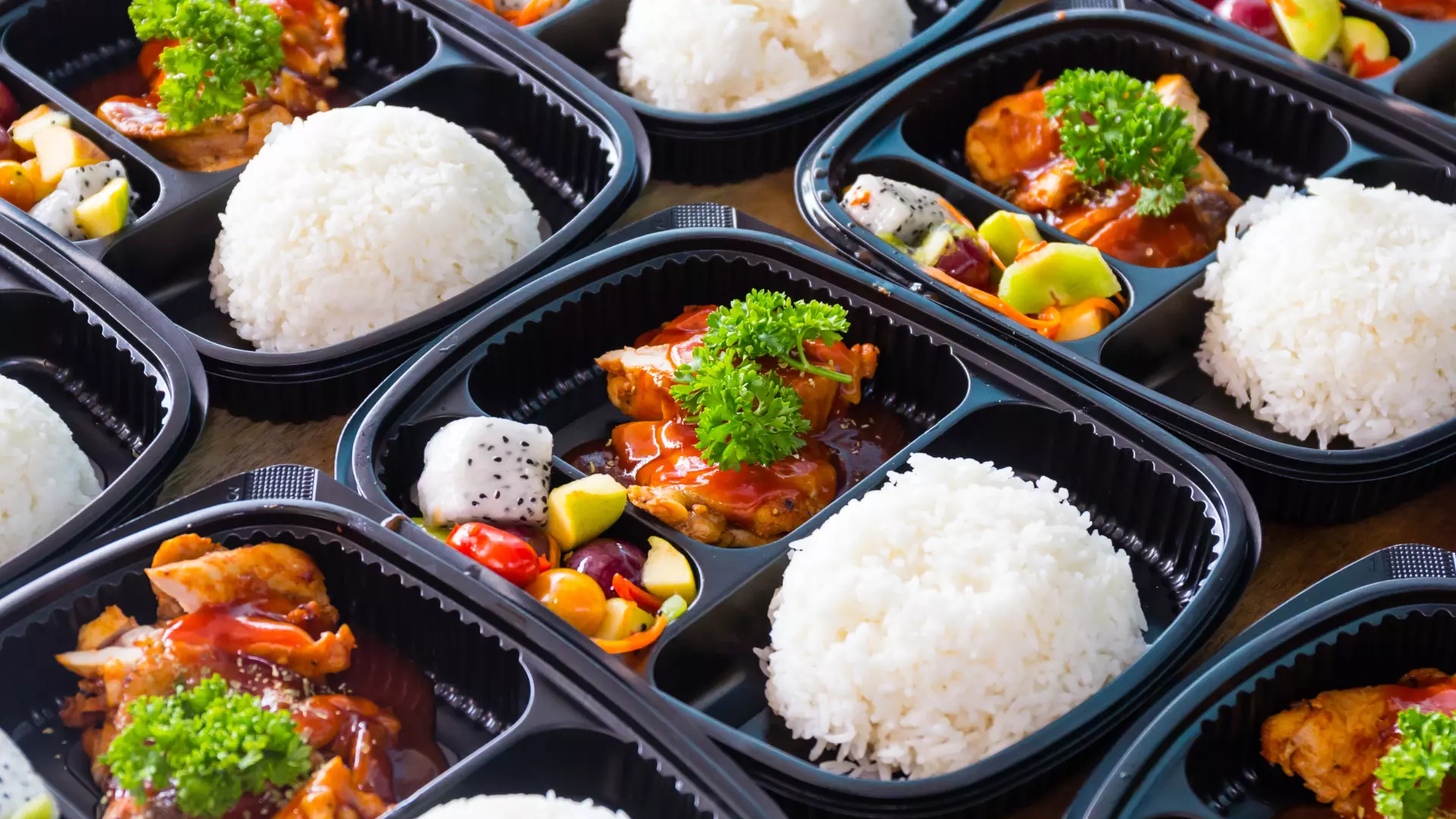
Why you don't have to eliminate eating out altogether
If you completely eliminate eating out, you will lose the enjoyment of life and accumulate mental stress.
Living alone can easily become lonely, so eating out every once in a while plays a great role in changing your mood and refreshing yourself.
For example, just eating out once a week as a reward to yourself can help you to create a balance and motivate you to continue living frugally. Going to lunch with friends or your favorite cafe can help you relieve stress and get new stimulation, giving you the motivation to try again.
How to prepare and carry your lunch
If you prepare your lunch at home, you can keep the cost per meal to around 200 to 300 yen, saving you tens of thousands of yen a year.
If you prepare the main dish and side dishes the night before, you can just pack the rice the next morning and it's ready to go. You can also pack the side dishes you used for cooking into your bento box, which avoids the trouble of having to cook twice.
Furthermore, if you use a cooling bag or a thermal container, you can transport your lunch more safely and deliciously while reducing the risk of food poisoning in the summer. Recently, even 100 yen shops have a wide selection of convenient bento items, so you can get creative without spending a lot of money.
Points that can save you a lot just by reviewing how you use your products
One thing that is surprisingly often overlooked is how to use things. For example, if you increase the number of different seasonings, you will not be able to use them all up and they will go to waste. By limiting yourself to basic seasonings such as soy sauce, mirin, sake, sugar, salt, and vinegar, you can make many Japanese dishes and stir-fries, which will help you avoid buying more than you need.
Also, while the small portions of prepared foods at convenience stores are convenient, they are expensive. If you buy ingredients for the same amount of money, you can make multiple meals. Furthermore, you can save both time and money by taking advantage of freezing and bulk buying. For example, just by preparing and freezing ingredients you buy in bulk, you can significantly reduce the number of times you eat out or go to convenience stores.
Search for a room
Only furnished properties with appliances are listed!
Examples of satisfying home-cooked meals for under 20,000 yen
This book introduces examples of cheap and delicious home-cooked meals for people who want to keep their budget under 20,000 yen, but don't want to eat bland meals. It's packed with tips to make your daily meals more enjoyable, from easy recipes that even beginners can make, to rice bowls and side dishes that can be prepared in advance.
Introducing simple and cheap menu recommendations
Simple set meal-style dishes such as "Teriyaki Chicken Breast," "Stir-fried Bean Sprouts," and "Miso Soup" are easy to continue even if you live alone. Chicken breast seasoned with a sweet and spicy sauce goes well with rice. Stir-fried bean sprouts have a fun crunchy texture and one bag can increase the volume.
If you choose cheap and nutritious ingredients such as wakame seaweed, tofu, and green onions, your miso soup will warm you up and increase your satisfaction. Furthermore, you can change the ingredients in your miso soup every day to keep it from getting boring.
Easy-to-follow daily menu
For people who don't have much time, "prepared meals" are a lifesaver. For example, Japanese dishes such as simmered dishes (boiled daikon or chicken), stir-fried hijiki, rolled eggs, and kinpira burdock can be stored in the refrigerator for 3 to 4 days, or in the freezer for about 2 weeks. If you prepare them in advance, you can quickly prepare a balanced meal of one soup and three side dishes by simply heating them up, even on busy mornings or when you come home tired at night.
Another advantage of pre-prepared meals is that you can enjoy "slightly different combinations." If you make several different types at once at the beginning of the week, your plate will change every day, making it easier to continue without getting bored.
Using a la carte dishes and rice bowls
On days when you feel tired and don't want to do anything, a la carte dishes or rice bowls are the best. For example, oyakodon can be made quickly with chicken, eggs, and onions, and the cost of ingredients is about 150 yen per meal. Gyudon and mabodon can also be made in a short time with few ingredients and seasonings.
Rice bowls allow you to serve rice and side dishes on one plate, which means less washing up and saves you time and effort. You can expand the variety of dishes just by changing the ingredients, and they are also cost-effective, making them the perfect choice for people living alone.
Tips for choosing ingredients that even beginners can follow
For beginners, the key is to choose dishes that use a few ingredients and are unlikely to fail. For example, one-pot dishes such as stir-fries, stews, and rice bowls can be cooked entirely in one pot or frying pan, and the seasoning is simple.
Another big attraction of one-pot meals is that they have fewer cooking steps and cleaning up afterwards is easy. Even if you're not good at cooking, it's easy to try, and by gaining success, it's easier to make cooking a habit.
For busy people! Money-saving cooking methods for when you don't have much time
Even if you're too busy to cook, don't worry! Here we'll show you money-saving techniques that you can easily continue even in your busy life, such as recipes that can be made in a short time, how to use frozen ingredients, and how to cook even when you're tired.
A menu that can be made in 5 to 10 minutes
"I come home tired from work or school and don't feel like cooking..." Even on days like these, it's important to keep cooking for yourself. In fact, there are plenty of easy meals you can make in just 5 to 10 minutes.
For example, stir-frying pre-cut frozen vegetables and eggs does not require knives and requires less washing up. Seasoning with just salt, pepper and soy sauce is delicious, and if you have time, adding a little sesame oil at the end will enhance the aroma.
Also, just natto rice and instant miso soup can be a perfectly nutritionally balanced meal. Natto is rich in protein, natto bacteria, and vitamins, and it completes the "one soup and one rice" meal.
The important thing is not that cooking at home equals making it perfectly, but rather that your goal is to keep doing it.
How to use frozen vegetables and rice
Frozen rice and frozen vegetables are a big plus when living alone. If you cook rice in bulk, wrap each serving in plastic wrap, and freeze it, you can just heat it up in the microwave whenever you want. You can also make onigiri and take it out when you're busy in the morning. With onigiri, you can change the ingredients to make it less likely that you'll get bored of it.
Frozen vegetables are useful for a wide range of dishes, including stir-fries, soups, curries, stews, etc. If you use pre-cut vegetables, you don't need to use a knife or cutting board, making preparation and cleanup much easier.
How to cook at home even when you're tired
For days when you feel really tired, we recommend recipes that don't require knives or hot pot dishes.
For example, if you're making a hot pot dish, all you have to do is put the ingredients in the pot and boil them. If you use commercially available hot pot soup, it's easy to add flavor, and you can complete a dish just by combining the vegetables, frozen meat, tofu, etc. that you have left in the refrigerator. Cleaning up is also easy, as you only need to wash one pot.
We also recommend using canned foods, cut vegetables, instant stews, and instant miso soup. It's important not to try too hard on tired days, and by stocking up on convenient ingredients for those times, you can avoid the habit of having to eat out or go to a convenience store. By creating an environment where you can cook even when you're tired, you can develop the habit of being able to continue cooking for yourself without any difficulty.
Search for a room
Only furnished properties with appliances are listed!
Summary | Live smart by keeping food expenses under 20,000 yen for single people
At first glance, keeping food expenses under 20,000 yen for a single person may seem like a high hurdle. However, the key is not to "endure" but to be "creative."
Anyone can achieve this without difficulty if they just cook their own meals, choose cheap, nutritious ingredients, and reconsider how they plan their shopping and use their time.
By incorporating ideas such as freezing, easy recipes, and preparing food in advance, frugal living becomes much easier and more positive. Furthermore, if you use the money you save for other enjoyments such as hobbies, savings, and travel, your overall life will become more fulfilling.
When you hear the word "saving money," many may think of it as something difficult or a boring life, but in reality, it is also an opportunity to increase the values of "delicious, fun, and healthy."
Try it out for just a week starting today. A little bit of awareness and action will surely make a big difference to the quality of your life and the food you eat.

